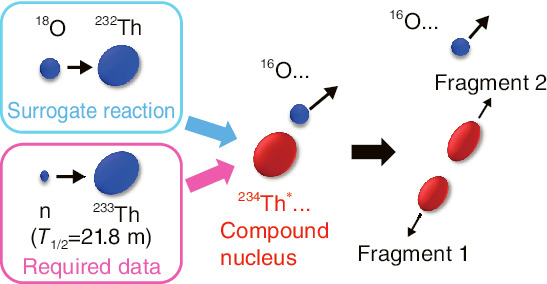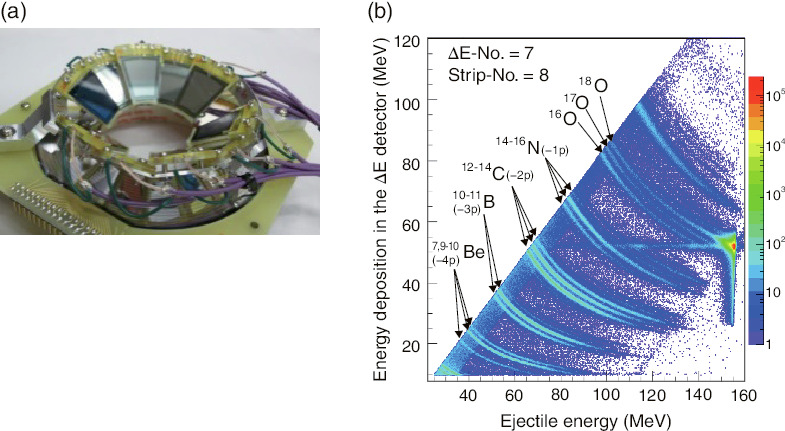
Fig.3-2 Principle of the surrogate-reaction technique

Fig.3-3 (a) Silicon charged-particle telescope (ΔE-E) and (b) result of analyzing ejectile nuclei
Long-lived minor-actinide (MA) nuclides such as americium and neptunium isotopes are produced in atomic power plants, which must be confined under control for a long period of time. The use of accelerator-driven systems (ADSs), for example, is considered one viable option for the incineration and/or transmutation of long-lived MAs into shorter-lived products through the use of high-energy-neutron-induced fission. This results in the production of many fission-product isotopes, whose yields (fission-fragment-mass distributions; FFMDs) should be well investigated. For the ADS system, the data necessary for the design broaden both in nuclides and incident neutron-energy, compared to the conventional light-water reactors. Some of the nuclides are short-lived, such that direct measurements using neutron beams are practically impossible. Furthermore, high-energy data are extremely limited, even for well-studied isotopes.
In this study, we used heavy-ion-induced multi-nucleon reactions to solve these problems. An 18O beam from the JAEA tandem accelerator was used to bombard the 232Th target (as shown in Fig.3-2) to generate the FFMDs for fourteen nuclides ranging from thorium to uranium, together with their incident-neutron-energy dependence up to 50 MeV, in one experiment. Good agreement with the literature data available for some nuclides served to validate this approach as a surrogate for neutron-induced fission. The surrogate-reaction method was only used in the cross-section measurement, and JAEA is the first to apply this idea to obtaining FFMDs. Another important feature is that the reaction allows us to access neutron-rich nuclei for fission studies, adding a new region onto the chart of nuclides.
In multi-nucleon-transfer reactions, a wide variety of excited nuclei are produced by exchanging neutrons and protons. We took advantage this process in the fission study using a technique for identifying produced nuclei on an event-by-event basis with a newly designed silicon ΔE-E detector (Fig.3-3(a)). The ejectile nucleus after the specific transfer channel was identified to determine the generated compound nuclide. This can be seen in the spectrum of Fig.3-3(b), where the different isotope lines corresponding to compound nuclei are clearly separated. We also determined the kinetic energy of the ejectile to assign an excitation energy to the compound nucleus, which is directly transformed into the incident-neutron energy. In the experiment, we also performed velocity measurements of the fission fragments to determine the fragment masses in the kinematic consideration. Through experiments using several radioactive-target materials such as U, Np, and Cm isotopes available in the JAEA tandem facility, almost all fission data required for the ADS can be obtained.
This study was partially supported by the program for “Comprehensive study of delayed-neutron yields for accurate evaluation of the kinetics of high-burn-up reactors” of the Ministry of Education, Culture, Sports, Science and Technology, Japan (MEXT).